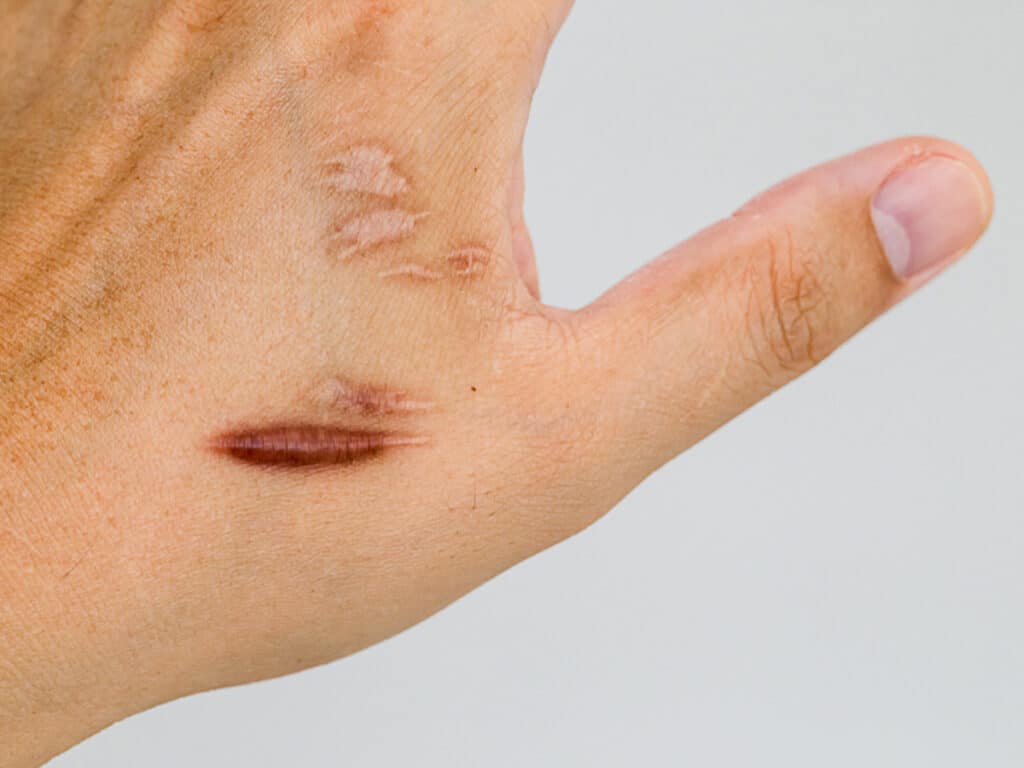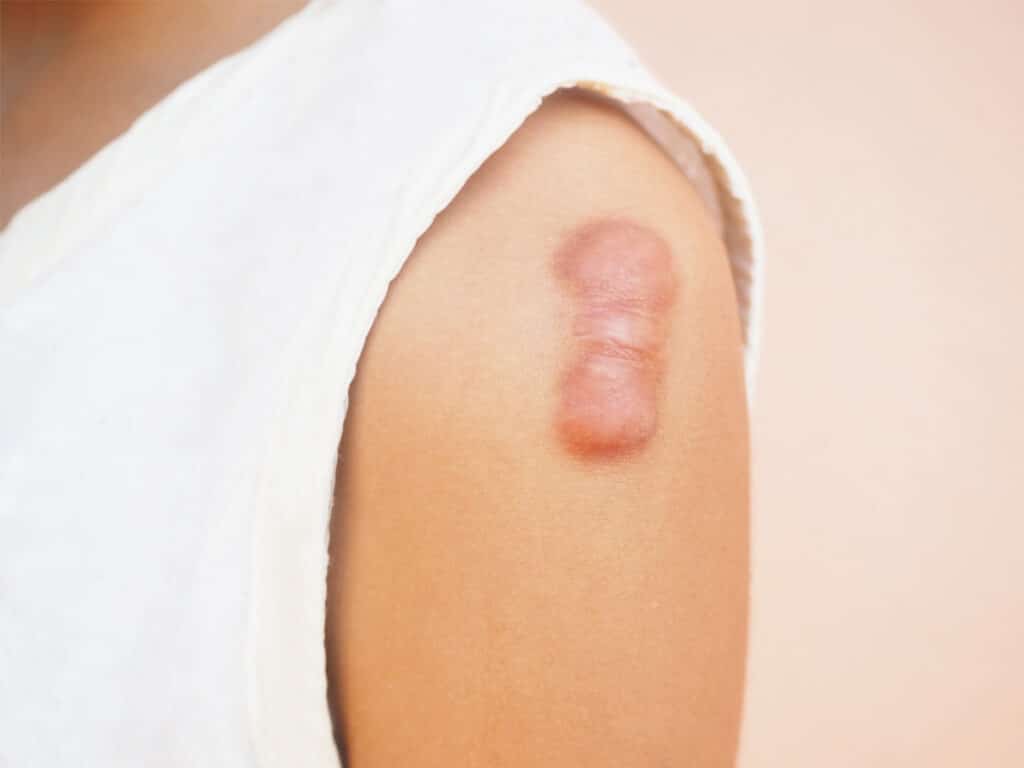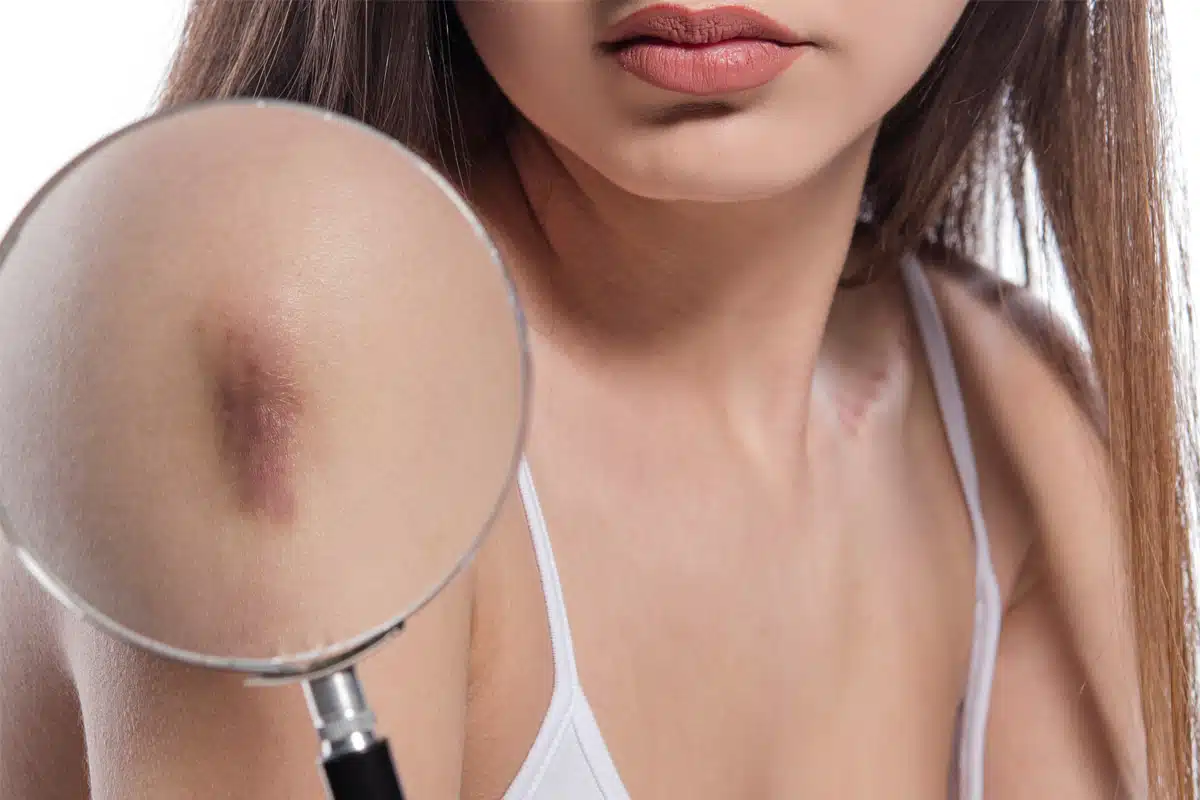Keloids are abnormal, raised skin growths that form at the site of a healed wound. While healthy skin repairs itself after an injury, some individuals may experience excessive scarring that can cause keloids. Treating keloids can be challenging, as they don’t always respond to conventional treatments. In this article, we will discuss two of the most effective treatments: superficial radiation therapy for keloids and surgical removal.
What Are Keloid Scars?
Keloid scars are raised, thickened areas of skin growth that occur after a cut, burn, or other skin trauma. They are a type of hypertrophic scar and can be caused by an overproduction of skin cells and fibrous tissue at the site of the injury. Keloids are usually larger than the wound itself and can spread beyond their original boundaries. They often appear reddish-purple but may also be pink, brown, or black. In some cases, they may be itchy, painful, or tender to the touch.
There are several potential treatment options for keloids, depending on the severity of the scar. For minor keloids, topical creams or steroid injections may be enough to reduce their size and improve their appearance. If these treatments are not successful, more aggressive treatments such as superficial radiation therapy and surgical removal may be necessary.
Using Superficial Radiation Therapy to Treat Keloid Scars
Superficial radiation therapy (SRT) is an effective treatment option for keloid scars. It is typically used to treat non-melanoma skin cancers such as squamous cell carcinoma, and can also be used in the treatment of keloid scars. During SRT, focused beams of low-energy X-rays are directed at the affected area to destroy abnormal cells while sparing healthy tissue. This radiation therapy helps to reduce or eliminate the presence of the scar without causing significant damage to surrounding healthy tissue. SRT is often used in combination with other treatments such as corticosteroids or cryotherapy for more effective results.
Benefits of S.R.T. for Treating Keloids
The benefits of S.R.T. for treating keloids include minimal risk of infection, fewer side effects than more invasive procedures, and a lower rate of keloid recurrence than other treatments. Additionally, since the radiation is applied externally, there is no damage to the underlying normal skin structure or tissue. This makes radiotherapy of keloids an attractive option for those looking to avoid any potential risks associated with more invasive treatments such as surgery.

Risks of Radiation Therapy for Keloids
Although superficial radiotherapy for keloids is an effective treatment, it does carry certain risks. For patients with keloids, the use of SRT can cause skin irritation or discoloration in the treated area. Additionally, long-term use of radiation therapy may carry a risk of carcinogenesis. It is important to discuss any potential risks with your doctor before beginning superficial X-ray therapies for keloid removal.
Surgery for Keloid Scar Removal
Surgery is an effective treatment for keloid removal. During the procedure, a dermatologist or plastic surgeon will make an incision and remove the clusters of scar tissue. The excision may include removing a portion of healthy skin near the keloid to ensure that all of the abnormal tissue has been removed. Your doctor may choose to use stitches or staples to close the wound after surgery determined by the size and severity of the keloid. Following surgical removal, your doctor may recommend additional treatment options such as radiation therapy or steroid injections to help reduce recurrence.
Benefits of Surgery for Treating Keloids
The benefits of removing keloids surgically include the removal of irregular clusters of scar tissue, as well as a reduction of the original trauma site. Surgical excisions are especially effective in removing keloid scars from thicker skin types with more collagen-containing tissues. It is also beneficial when other treatments such as radiation therapy for keloids and steroid injections have not been successful in reducing the size or appearance of the scars. Additionally, wound closure techniques such as stitches or staples can be used to minimize the risk of recurrence and infection at the surgical site.

Risks of Surgery for Treating Keloids
The risks of surgical keloid removal include the risk for infection and forming surgical scars. Surgery may take several hours depending on the size and severity of the keloid. The original wound can extend the healing process, and there is a risk that the scar tissue may not completely disappear or blend into the surrounding skin after surgery. Additionally, if the surgical excision was too deep or too shallow, it could lead to a recurrence of the scar tissue or an asymmetrical appearance.
Comparison Between Radiation Therapy and Surgery as Treatment Options for Keloids
Countless keloid sufferers are turning to radiation therapy and surgery as effective treatment options for the removal of keloids. Both procedures offer safe forms of treatment, with radiation therapy providing a lower recurrence rate than surgery. Radiation therapy can help minimize skin irritation and discoloration while also avoiding any potential damage to the underlying tissue.
On the other hand, surgery is an effective way to remove clusters of scar tissue, but it comes with a risk of infection at the wound site as well as unsightly scarring after healing. The size and severity of the keloid are important for some patients who may find that one form of treatment provides a better response than another. Making it important to discuss all available options with your doctor before deciding on a course of action.
What Should You Consider When Choosing a Treatment Option For Your Keloid?
When choosing a treatment option for a keloid scar, it is important to consider surgical and non-surgical treatment options as the cure for keloid scars. It is also wise to consider the underlying cause of the scar formation and your personal treatment response. The size and severity of the keloid will determine that some treatments may be more effective than others in reducing visible scars. Ultimately, it is important to consult with a healthcare professional before deciding on a course of action and discuss all available treatment options.
Get a Consultation with Keloid Experts!
If you are looking for expert advice regarding different treatments for keloids, then reach out to Dr. Mendez and Dr. Salloum at The Keloid Plastic Surgery Center! Through their years of experience, they have helped many patients find the best solutions for treating their keloid scars. Schedule a consultation today and learn more about the effective treatment options available to you!
